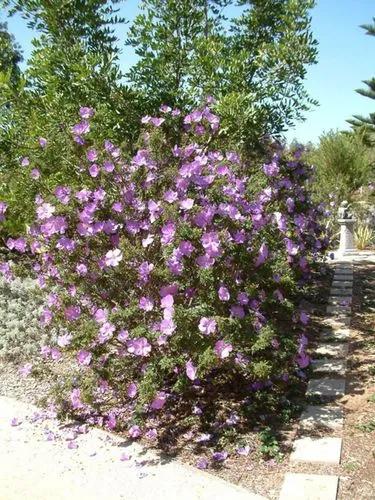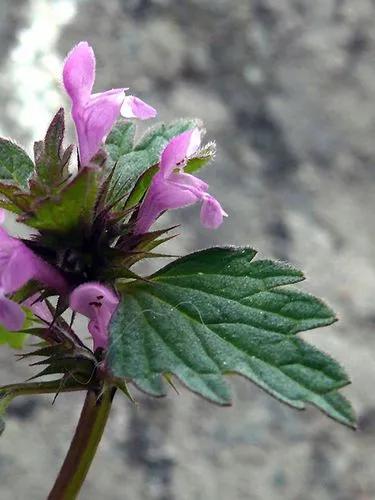If you’re fond of aromatic plants, the Chocolate Mint is a wonderful addition to your home and garden. This Mint hybrid gives off a citrusy, minty, chocolate-like smell every time you walk by. And the best part is that this plant is incredibly easy to grow outdoors and indoors! It is low-maintenance and can be a great asset if you enjoy baking and cooking.
Chocolate Mint Care
Mentha × Piperita F. Citrata 'chocolate'



Chocolate Mint combines the well-known Peppermint (Mentha Piperita) and Orange Mint (Mentha Citrata). The plant’s scent and aroma give off a ‘chocolatey’ essence, which is what this cultivar thanks its name to.
Like other Mint plants, Chocolate Mint is a fast-growing perennial that can quickly become invasive. However, this specific variety is artificial as it was bred by mixing other species; thus, it is not found in the wild.
Chocolate Mint grows up to three feet (90 cm) and has dark red to brown stems and dark green leaves, arguably darker than others. During the summer, the plant may flower with purple-colored, tiny blooms. Although these blooms have little to no scent, they attract pollinators like bees and butterflies to your garden.
How to Care for the Plant

Water

Check the soil’s moisture levels daily by poking your fingers into the top layer of the soil. When you notice that the top inch or two (3-5cm) of soil has dried, it is time to give your Mint a drink. Keeping your Chocolate Mint hydrated during hot summer is very important as they can quickly wilt and wither in the heat.
Take care to avoid overwatering! Never water your soil while it still feels wet or moist - this will cause the roots to rot and your poor plant to die!

Pruning

Pruning your Chocolate Mint is unnecessary, as it is automatically pruned when you harvest. The plant will grow back bushier after pinching.

Fertilizer

You don’t need to feed this plant often; it can grow off minimal nutrients. We suggest adding a tablespoon of slow-release fertilizer pellets in Spring. Alternatively, any balanced 8-8-8 or 10-10-10 NPK fertilizer will work well. You do not need to add any liquid fertilizers during the growing season.

Sunlight

Give your Chocolate Mint a bright and sunny spot on a West- or East-facing windowsill. We do not recommend putting the plant in full Southern exposure, which can cause the leaves to become scorched and burnt. Give the plant at least 8 hours of indirect, bright sunlight for the best results.

Soil

Most usual potting soils will be comfortable for the Chocolate Mint. However, if you want to take your soil’s quality up a notch, you can add extra worm castings and perlite, which helps to provide a well-draining and nutrient-rich medium.

Propagation

You can very easily propagate this plant through stem cuttings. Simply snip off a 6-inch (10cm) piece of stem and remove the lowest set of leaves. Stick the bottom of your cutting in a water-filled vase, glass, or jar and pop it in a brightly lit location (out of direct sun). Ensure that no leaves are touching the soil because they will rot.
After a few weeks, the cuttings will have grown roots. You can transfer the plants to the soil when your roots are about 2 inches (5 cm) long. They will take off quickly; soon, you’ll have many more Chocolate Mint plants to enjoy.

Temperature

The Chocolate Mint is not too fussy about temperature as long as it’s not living in extreme heat or frost. The ideal temperature range is between 55 and 75_°F (13-24°_C). Anything outside this range can cause wilting, brown or yellow leaves and leaf loss.
To avoid heavy temperature fluctuations, try to keep the plant out of cold drafts and radiator heat.

Container

The main concern about choosing a container for your Chocolate Mint is that it has proper drainage in the form of drainage holes. A plastic nursery pot is optimal, as these can help retain moisture, which is important for your Mint plant to remain healthy.
A 12 inches (30cm) deep pot will be sufficient for a mature Mint. However, if you have a smaller plant, we recommend keeping it in a snug pot before planting it into a big one. Repot the plant annually in Spring when it has outgrown its previous pot. Size up to 2 inches ( 5cm) at a time.

Fun fact

Mint plants can be easily grown hydroponically, and this, of course, includes Chocolate Mint. If you have a hydroponic garden or want to get started with hydroponics, consider growing Chocolate Mint. It’s one of the easiest and most rewarding plants to grow in this soilless system.

Popularity

1,019 people already have this plant 257 people have added this plant to their wishlists

Common pests

Chocolate Mint may fall victim to pests like aphids, whiteflies, and spider mites. Luckily, you can keep these critters off your Mint plant with good monitoring and prevention.

Frequent diseases

Chocolate Mint is not typically prone to illnesses. However, orange-colored spots on the undersides of the foliage may indicate rust. White spots on the topside of the leaves can be a sign of powdery mildew. If you find either of these symptoms, please remove all infected foliage and spray the plant thoroughly with a copper-based fungicide.

Botanist’s tips

Discover more plants with the list below
Popular articles






